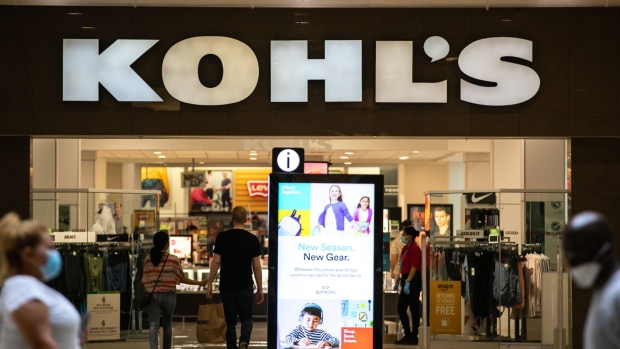Aug 18, 2020
Kohl's falls as results illustrate retail's stark divide
, Bloomberg News

Kohl’s Corp. shares fell as much 14 per cent after the U.S. retailer posted a quarterly loss and declining sales, a sign of the struggle of many retailers amid pandemic uncertainty.
The company’s second-quarter report contrasts sharply with the booming sales figures released Tuesday by Home Depot Inc. and Walmart Inc., two massive retailers that were deemed essential and allowed to operate through the pandemic. Kohl’s and its nonessential peers, meanwhile, have struggled to regain sales as shoppers stay home and flock to e-commerce.
Kohl’s posted a loss of 25 cents a share when excluding some items -- better than the estimated 70-cent loss. Sales were US$3.2 billion -- a decline of 23 per cent from a year earlier but still above analyst expectations.
The results contrast with Home Depot and Walmart and “underscore the discriminatory and uneven impact of the pandemic on retail,” Neil Saunders, managing director of GlobalData Retail, said in research note. The company’s sales decline “demonstrate that the recovery for some retailers will be prolonged and protracted.”
With the pandemic still roiling its operations, Kohl’s once again refrained from providing same-store sales. That’s the figure most watched by analysts and one of the best indicators of a retailer’s strength.
The company said that all of its stores reopened during the quarter and it generated positive operating cash flow. Kohl’s has added curbside pickup and plexiglass barriers while requiring workers to wear masks, a bid to ease consumers’ nerves amid the COVID-19 pandemic.
What Bloomberg Intelligence Says
“Kohl’s margin may remain pressured in 2H by rising digital penetration, 41 per cent of sales, a growing home business and heightened promotions, but we see these as opportunities to take market share as store closings and bankruptcies change the retail landscape.”
- Poonam Goyal, Retail Analyst
Looking ahead, Kohl’s said it expects COVID-19 to continue to hit its business in the second half of the year and so it’s planning “conservatively.” It also sees customers starting holiday shopping earlier than usual, and it’s “prepared to chase any demand upside as it unfolds,” it said in slides accompanying the release.
Kohl’s shares fell to as low as US$20.26 on Tuesday, the lowest intraday in almost five months. the stock had declined 54 per cent this year through Monday’s close.


